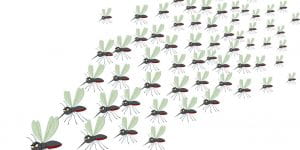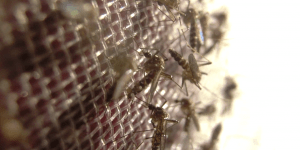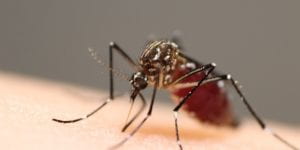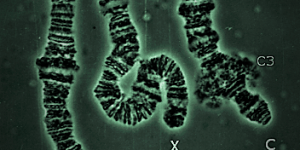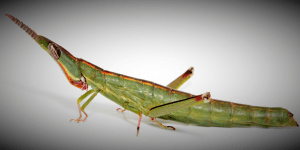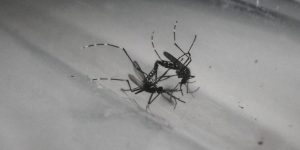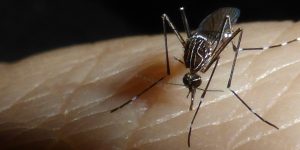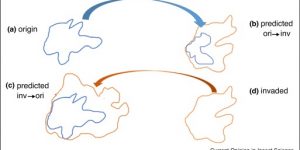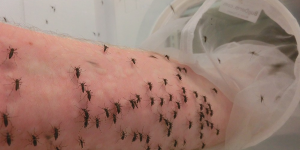Tag: laboratory adaptation
-
Variability in mosquito host-seeking ability
Words and images: Meng-Jia Lau Behaviour is one of the most complex study areas in biology because it involves a combination of many factors that are often quite variable. In mosquitoes, host-seeking is the behaviour of females seeking a blood meal which provides the extra protein they need in order to lay eggs. The biting […]blogs.unimelb.edu.au/pearg/2019/11/28/variability-in-mosquito-host-seeking-ability
-
Lab-reared mosquitoes maintain their lust for blood
Words and images: Perran Ross Modified mosquitoes raised in laboratories are being released into the wild in disease control programs. These mosquitoes will still bite you, but they’re less capable of transmitting the viruses that cause dengue fever, Zika and more. This antiviral effect is caused by infection with a bacterium called Wolbachia, which occurs […]blogs.unimelb.edu.au/pearg/2019/11/07/lab-reared-mosquitoes-maintain-their-lust-for-blood
-
Releases of Wolbachia-infected mosquitoes for disease control
Words and images: Perran Ross When animals raised in captivity are released back into the wild, you might picture cute and furry mammals from an endangered species. But in many countries around the world, people are releasing mosquitoes raised in laboratories into the environment. These mosquitoes feed on human blood and are vectors of dengue, […]blogs.unimelb.edu.au/pearg/2019/09/18/releases-of-wolbachia-infected-mosquitoes-for-disease-control
-
Collecting Rhynchosciara: an important fly in the history of genetics
Words and images: Ann Stocker Rhynchosciara species are endemic to South and Central America. The larvae are readily observed because they are a centimeter or more in length, usually reddish in colour and travel in groups of dozens to hundreds of individuals (Fig 1). However, they only came to the attention of biologists after Crodowaldo […] -
The diversity of Aussie grasshoppers | Part two
Words and images: Vanessa White Some important lessons learnt and new questions around Vandiemenella laboratory rearing In the previous grasshopper blog, I reported “reasonable success with room for improvement” in our attempts to rear Vandiemenella grasshopper nymphs in the laboratory. Alternative housing is an important focus for improvement, but a discussion with Mike and Ary […]blogs.unimelb.edu.au/pearg/2018/10/15/the-diversity-of-aussie-grasshoppers-part-two
-
Marking mosquitoes
Words: Mengjia Liu Images: Perran Ross and Mengjia Liu It is important to study the fitness of different colonies of Wolbachia-infected mosquitoes, and also of interest to test fitness effects within the same colony when mosquitoes are maintained under different conditions. As we have been maintaining uninfected mosquitoes under laboratory conditions for over 25 generations, […] -
Large male mosquitoes unluckier in love
Words and images: Perran Ross Large male mosquitoes may have more trouble than smaller males in finding a partner. In a new study, we find that small female mosquitoes tend to avoid larger males, preferring to mate with smaller ones. In this study, now available as a pre-print on bioRxiv, we performed laboratory experiments to […]blogs.unimelb.edu.au/pearg/2018/05/31/large-male-mosquitoes-unluckier-in-love
-
NEW PROJECT | Buruli ulcer
Words and photo: Jason Axford On 26 April at the Peter Doherty Institute, Federal Minister for Health, Greg Hunt, announced new NHMRC funding to investigate the mysterious and rather horrific disease commonly known as Buruli ulcer (BU) (formerly known as Bairnsdale ulcer). The project is led by Prof. Tim Stinear in the Department of Microbiology […]blogs.unimelb.edu.au/pearg/2018/05/10/new-project-buruli-ulcer
-
Rapid evolution in insect pest species
Off the back of a review Ary wrote last year in Current Opinion in Insect Science, a less technical and more digestible summary is now available (sans pay-wall) at Science Trends. A Quote from the Science Trends article to grab your interest: Evolutionary changes often occur when pest species invade new areas where they have […]blogs.unimelb.edu.au/pearg/2018/04/30/rapid-evolution-in-insect-pest-species
-
Study Shows Rapid Evolution in Lab-Reared Insects | Perran and Ary’s new paper covered in Entomology Today
Perran and Ary’s lab adaptation review paper is fresh off the press and immediately generating interest. Follow the link below to Entomology Today to read all about it. Study Shows Rapid Evolution in Lab-Reared Insects
